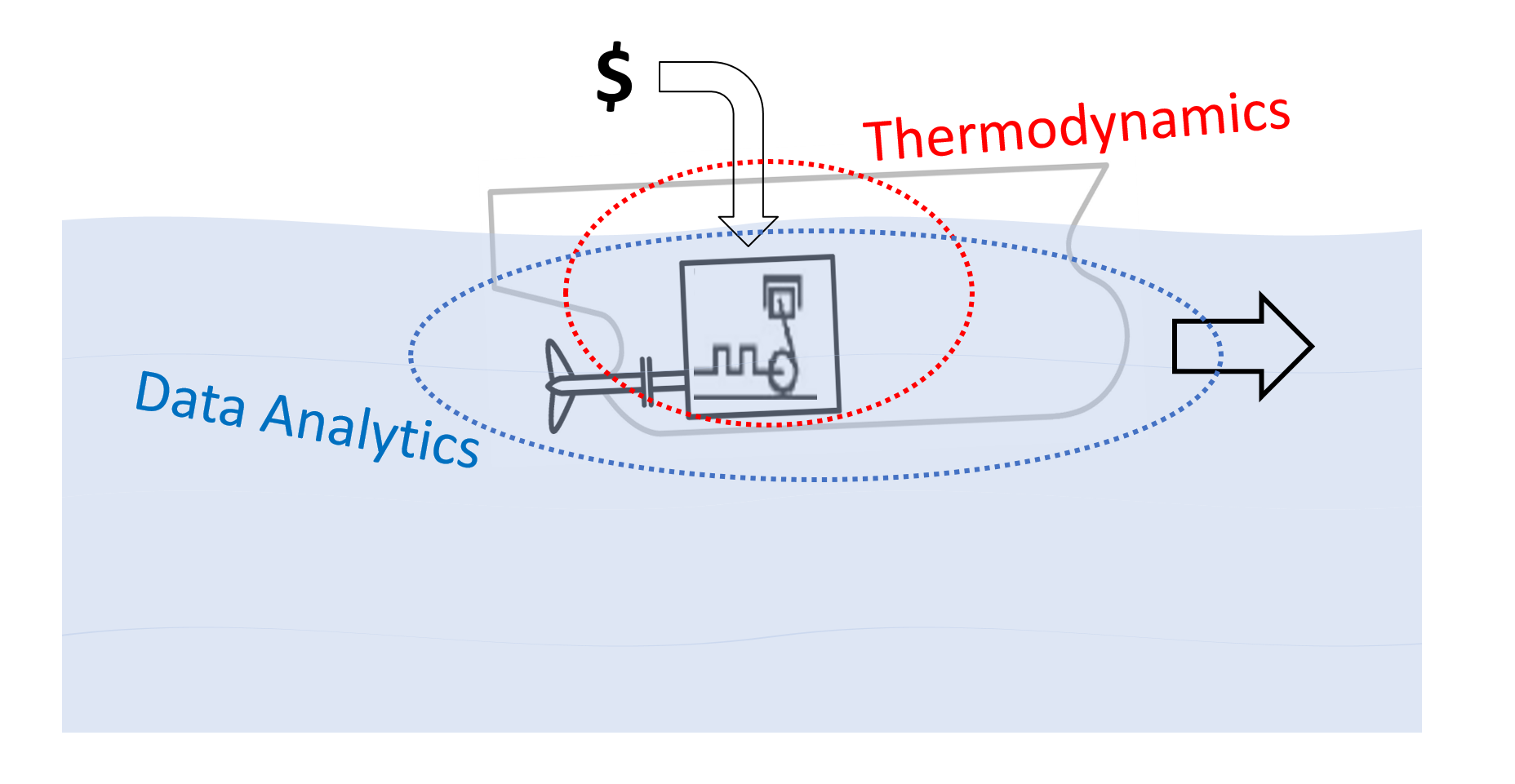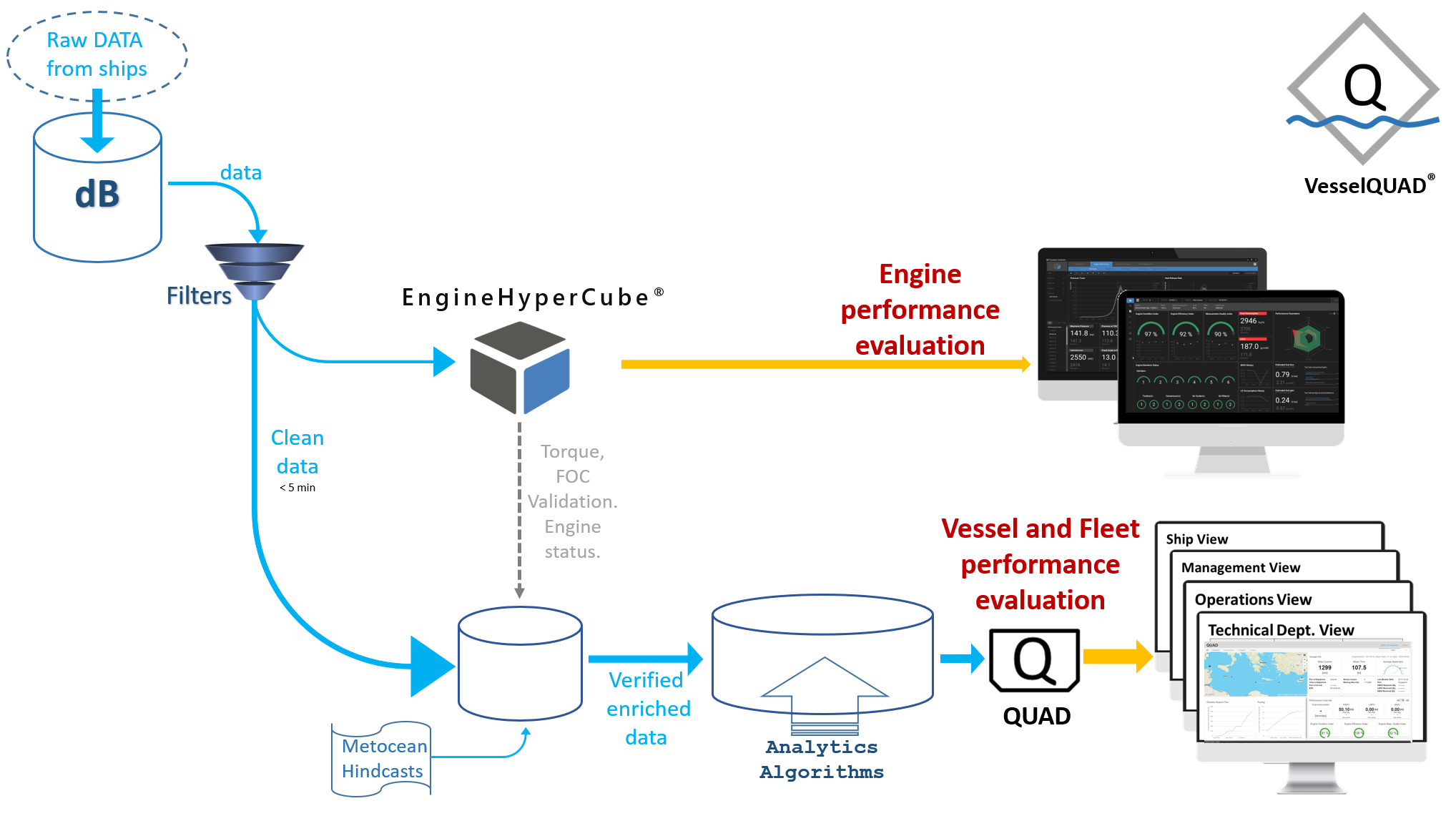Vessel Performance Management
The most accurate
vessel performance evaluation
Propulsion Analytics has developed and introduces a novel “inside-out” methodology using the “engine as a sensor” for a most accurate vessel performance evaluation. “Inside-out” refers to the fundamental process in ship operation of the conversion of money into vessel speed. In the application VesselQUAD® the vessel performance evaluation is accomplished through a combination of propulsion engine Thermodynamics, plus Analytics (Machine Learning-ML) on continuous recordings of vessel and engine data, originating from any third-party onboard data acquisition system.


Decision making in vessel management
Accurate vessel performance evaluation is essential for continuous up-to-date Fuel Oil Consumption (FOC) prediction, hull and propeller cleaning decisions and any assessment of hull/propeller adaptations. The gradual reduction in vessel performance over time is primarily due to the fouling of the hull and occasionally due underperformance of the propulsion installation. Any overconsumption of fuel and its projection in time, have to be accurately estimated, so that the need of a hull or propeller cleaning event can be decided and subsequently the effectiveness of any such cleaning event can be assessed. Accuracy is of utmost importance, since the differences that need to be identified are usually changes of power demand and fuel consumption of just a few percentage points, over a relatively long period. Linking performance with journeys, stoppages and geographical location, provides additional decision-making opportunities in vessel management.
“Inside-out” methodology
The inclusion of engine thermodynamics is essential in order to ensure that the analytics algorithms are fed with highest quality data, attained through consecutive filtering, validation and enrichment of recorded data.
This also leads to increased accuracy (>97%) which allows the determination of small changes in demanded power and FOC (error <3%).
In the application VesselQUAD® the data from the ship are filtered and then passed on to the two interacting applications, the Engine Hyper Cube® for engine performance evaluation and QUAD for vessel performance evaluation.


CO2 emissions intensity and reduction
The VesselQUAD® application, when linked to an onboard data-acquisition system, can accurately calculate the actual GHG emissions intensity of a voyage using real operating data.
The application can further provide a true baseline for subsequently benchmarking a GHG emission reduction SEEMP plan and for accurate ex-post evaluation of any effected measures for emissions reduction, such as engine power limitations or efficiency improvements, alternative fuels, operational changes, such as slow steaming or weather routing, as well as vessel related measures, such as hull friction reduction and propeller thrust improvements.
